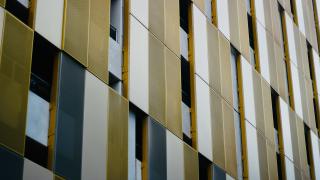Introduction
This is the second in a series of articles developed by Woodgate & Clark, looking at the challenges and opportunities associated with achieving zero carbon in building.
The UK built environment is responsible for approximately 25% of total UK greenhouse gas emissions and the UK has a legally binding target to reach net zero by 2050. At COP26 the Government committed to achieving 68% reductions in carbon emissions by 2030. The insurance industry has a role to play in helping to achieve these targets through the choice of materials used in building repairs.
This second article examines the use of concrete, cement and plasterboard in building construction and repairs and the alternative, low carbon solutions becoming available.
Concrete
Concrete is responsible for 1.5% of UK CO2 emissions (7.3M tonnes). Since 1990, The UK concrete and cement industry has reduced the embodied carbon of concrete, per tonne, by 30% . The Concrete Centre (www.concretecentre.com) reports annually on its progress to decarbonise. The absolute carbon emissions reduction of the UK cement and concrete industry is 53% compared to 1990 .
According to The CIOB magazine, construction industry experts have proposed a standardised carbon rating system to allow clients and designers to choose low-carbon concrete. They made the recommendation in the Low Carbon Concrete Routemap, which sets out three decarbonisation routes to 2050. These are based on what action the industry takes and how fast carbon sequestration in concrete advances.
Even under the most modest route, emissions are expected to fall from 10m tonnes CO2e in 2022 to 5m tonnes in 2035 but looking at the most optimistic scenario, the concrete industry could absorb more greenhouse gases than it emits by in the 2040s. How will they achieve this?
The recommendations include:
• An industry-wide rating system to disclose the carbon embedded in different concrete mixtures.
• Options for reducing the cement content. These include using limestone and calcined clays as fly ash and blast furnace slag become less available.
• Design approaches that use less concrete or lower-carbon concrete, such as using voids, coffers, non-structural fill and smaller spans between columns.
• Giving concrete suppliers maximum time and flexibility to choose a mix that meets the requirements with the minimum carbon.
• Updating technical standards to reflect the priority of reducing carbon and the latest materials and techniques.
Cement
A lot of cement is used in building repairs. From brick and blockwork, to rendering and roof repairs. Portland cement is the standard material and every tonne of cement emits 622kg of Co2.
LC3 is a new type of cement that is based on a blend of limestone and calcined clay and can reduce CO2 emissions by up to 40%. It has a similar performance to OPC (Ordinary Portland Cement) and can save up to 25% of costs in production. It is a direct replacement for OPC.
The objective of the LC3 project is to make LC3 the standard cement to use in the global market. By reducing the use of OPC it is calculated that CO2 emissions will reduce by 2%.
Plasterboard
Another material used a lot in refurbishment and insurance repairs is plasterboard. According to a study from the University of Bath, plasterboard was responsible for 3.5% of the UK’s annual emissions in 2017.
Gypsum board (commonly referred to as plasterboard or drywall) is an energy intensive product to manufacture. It is a widely used building finish material for walls, ceilings, and partitions. About 2 billion m2 of gypsum board is manufactured annually, using about 23 million tonnes of crude and synthetic gypsum. The gypsum used in gypsum board comes from both natural (mined) and synthetic sources. Synthetic, or Flue Gas Desulphurization (FGD) gypsum, is a by-product of coal-fired power plants.
It is a wasteful product and is estimated that 300,000 tonnes per year of gypsum board waste from new construction alone are generated because of over-ordering, incorrect specification, damage, and off-cuts during construction.
Specifying lightweight gypsum board products and eliminating waste material has the most impact when trying to reduce the carbon footprint of gypsum board.
A UK biotechnology company’s low carbon, biodegradable plasterboard could become a sustainable building material for refurbishment.
In addition, a carbon-absorbing plasterboard is being tested in pilot trials to assess its efficacy as an alternative to mainstream plasterboard products. Breathaboard, is a bioscopic alternative to gypsum plasterboard to plastering walls, that could one day become a sustainable building material for those undertaking self-build or renovation projects.
Breathaboard is a sustainable and completely biodegradable plasterboard made from lime and food crop by-products that can be used on walls, ceilings and floors in any room of a house. It is used and installed in the same way as standard plasterboard.
Our next article will look at decorating products and plastics. In the meantime, if you have any questions please contact Nick Turner





